

Max Davies
2026 Toyota HiAce review
1 Day Ago
Korea's new ‘space bus’ has entered local orbit. We check out the mid-grade petrol version to see whether it fits the family-hauling mould.
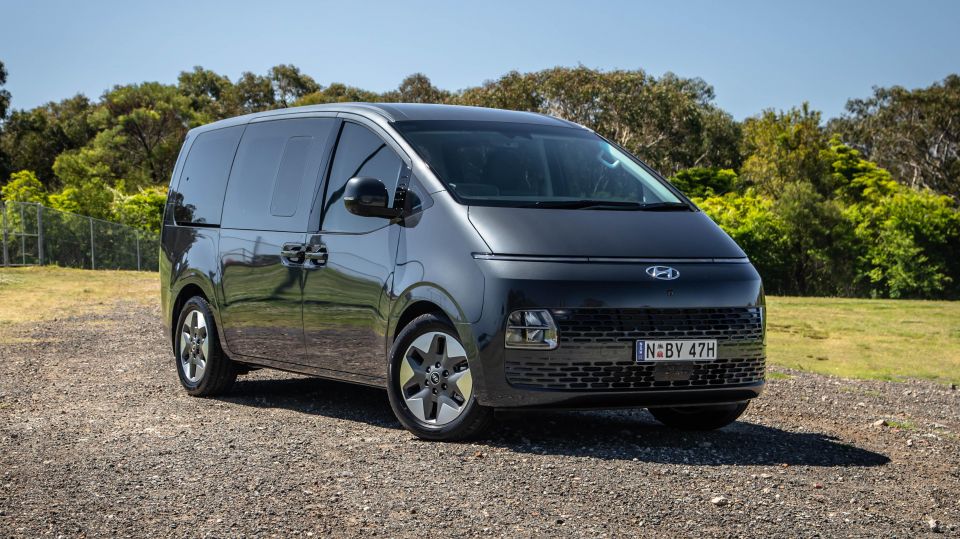
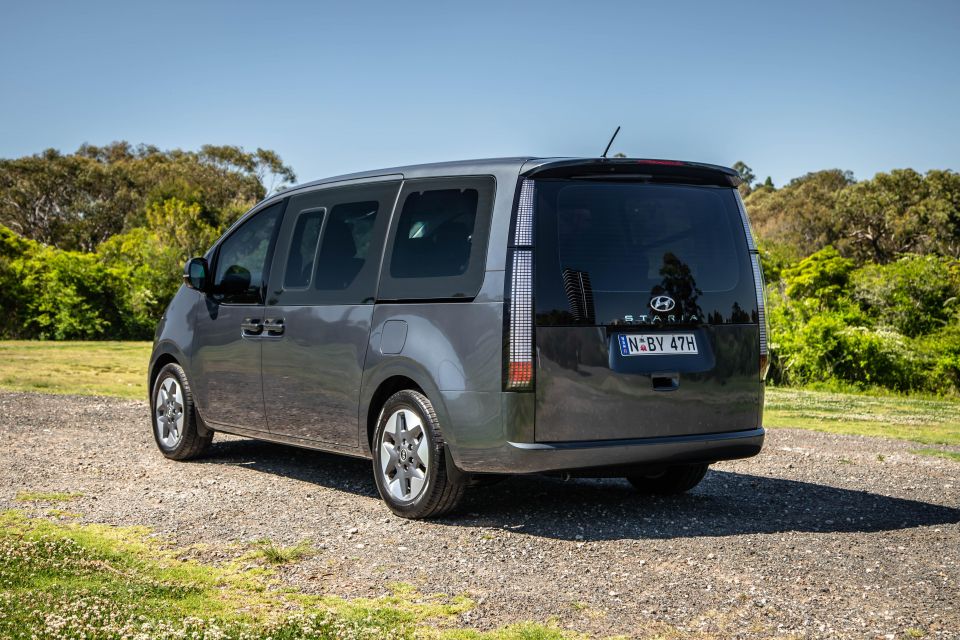

Journalist

Journalist


Journalist

Journalist
Where expert car reviews meet expert car buying – CarExpert gives you trusted advice, personalised service and real savings on your next new car.
The Hyundai Staria – like it or loathe it, right now, in freshly minted form, it certainly turns heads and grabs attention. In a measure that vans, lugging cargo or loved ones, usually don’t.
In our launch review of flagship diesel Highlander, Paul saw Robocop. Here, with the mid-spec Elite in petrol front-driven guise, I see Iron Man, despite the obviously inappropriate choice of body colour.
I’ve spent some time in the even newer trade-spec Staria-Load, too, which I nick-named Imperial Stormtrooper, for a reason Star Wars fans may find glaringly obvious.

The whole space/sci-fi/fantasy theme is strong in this one (a small grey Jedi mentor might quip). And why not? It’ll at least get some kids from some families jazzed about the purchase of a humble people-moving van is ways many forebears and alternatives mightn’t. Surely a good thing – besides, anything that makes humdrum motoring a little more fun is surely a good thing.
But its someone’s job to look through the fancy façade and rate what’s fundamentally practical motoring by practical measure, which is why we’re right here right now. But, equally, the Staria is a perfect case in point that styling does matter in vehicle ownership, and it’s all too easy to forget even the most humdrum motoring choices are emotionally driven to some extent, whether you’re conscious of it or not.
Plonk yours truly in the camp that will, in all honesty, forgive functional foibles if the vibe is pleasing enough. And, in disclosure, I certainly like the cut of the Staria’s jib. With that, I’ll consciously don the critical hat and sort through what’s good and effective in the Elite 3.5 FWD package, and what isn’t.
The 2022 Hyundai Staria Elite V6 FWD lists for $56,500 plus on-road costs, or a little over $60,000 drive-away according to Hyundai’s online configurator. You can save eight grand by slipping into the base variant ($48,500) and the premium goodness plied by the top-spec Highlander demands another ten grand of investment ($66,500).
Whichever of the three variant trims you choose, there’s a diesel substitute with on-demand all-wheel drive available for an added three grand over the petrol front-driver.
Our test guise lines up neatly against its technically-related cousin, the Kia Carnival, in parity 3.5L petrol form, which wants for $56,888 before on-roads in SLi trim, three-up from a choice of four grades.
Six colours are on the menu. Outside of standard black, each commands a $695 premium.
There aren’t available options, per se, though there is a menu of nice accessories such as a cargo organiser ($199), bike carrier ($412) and a rather nifty 36-litre fridge/freezer unit ($1399).
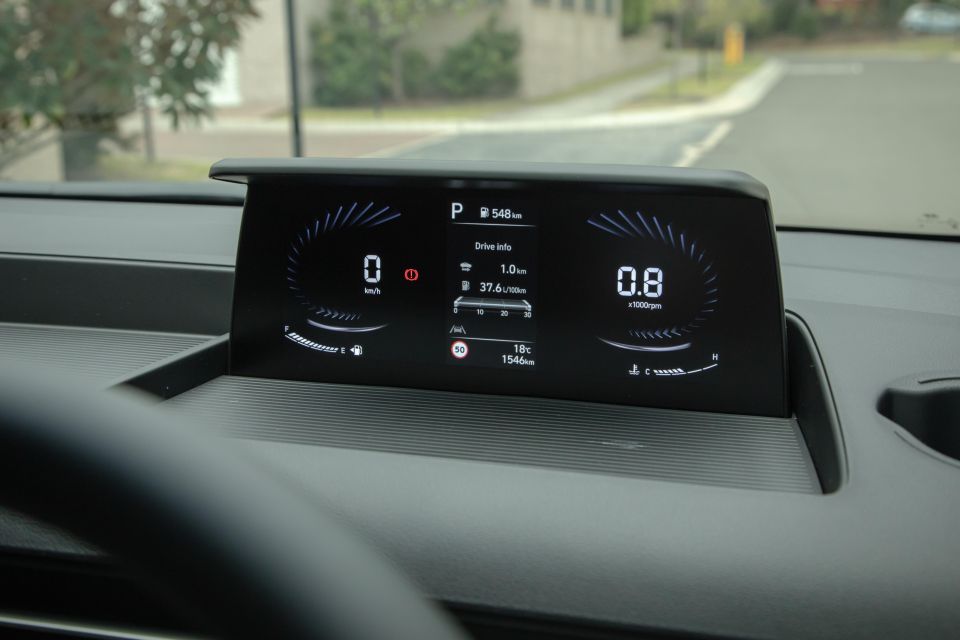
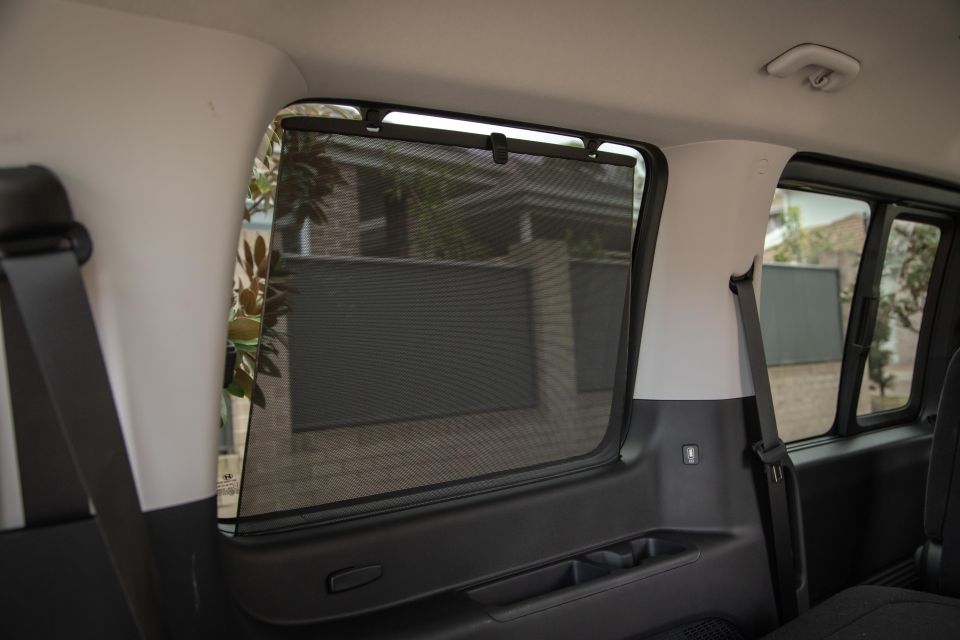
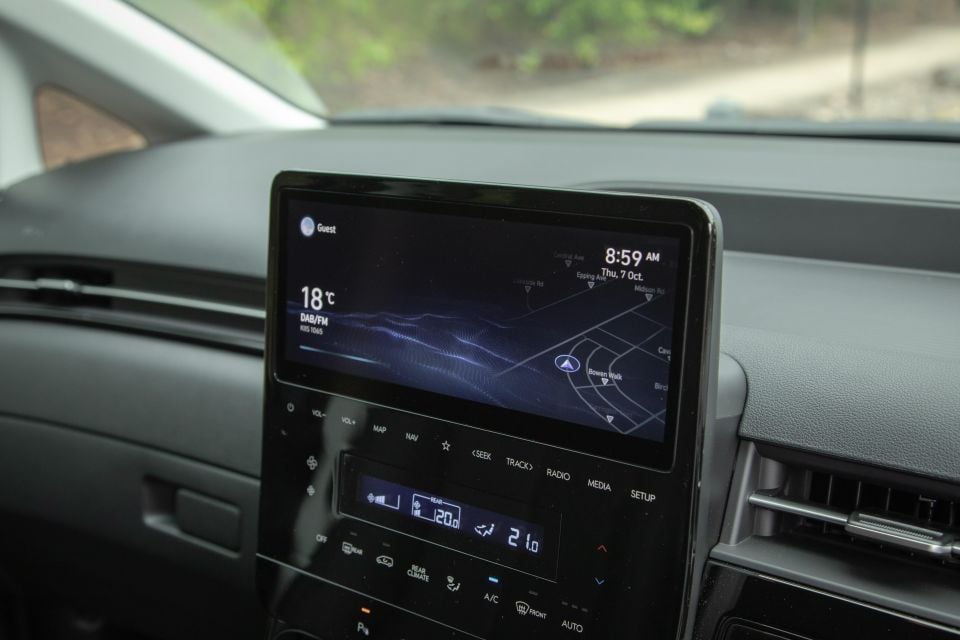
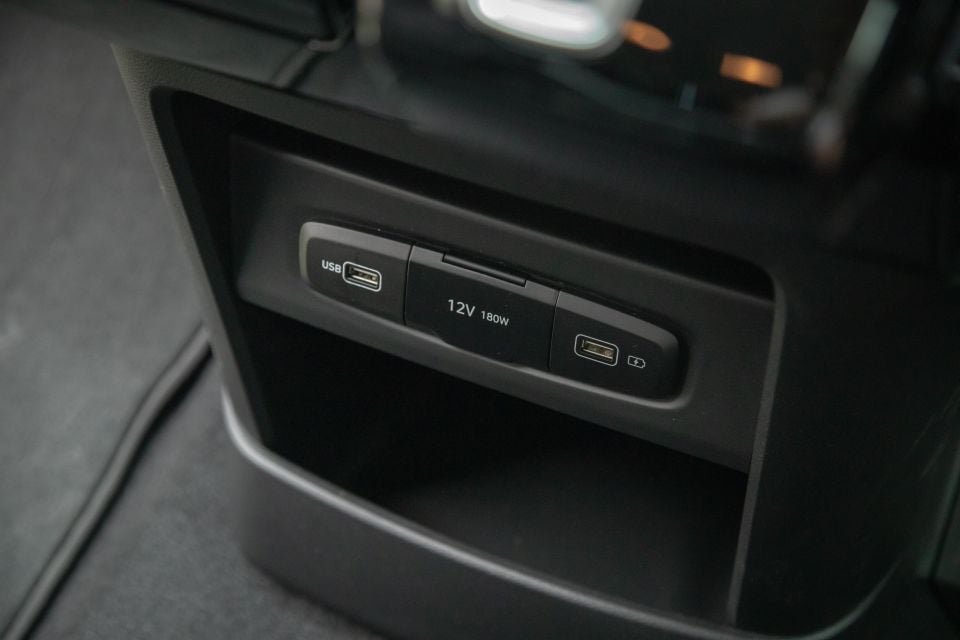
Buy your new car without the stress. It's fast, simple and completely free.

Great service from Travis and team, second time I have used this business would not hesitate to recommend them to anyone
Craig C.
Purchased a Ford Ranger in Sunshine Coast, QLD
CarExpert helped Craig save thousands on his Ford Ranger, now let us save you on your next new car.
Find a dealGiven it’s a fair fiscal walk up and down the range, it’s fair to expect the Elite to pile on a fair quantity of goodies without venturing too far into excessive territory. A fair chunk of the eight-grand rise above the entry version must surely sink into the expense of trimming three seating rows in leather.
Outside, there’s not much that distinguishes base from Elite outside of keyless entry with remote start, and powered operation of side doors and tailgate. Otherwise, both versions fit 18-inch alloys, full LED lighting (reflector-type) with auto high-beam, front and rear parking sensors, heated and power-folding mirrors, and a full-sized spare wheel.
It’s inside, fittingly, where the Elite starts to march upmarket. Beyond the addition of leather, the Elite fits 12-way driver’s seat adjustment and swaps the base 8.0-inch infotainment for a high-grade 10.25-inch multimedia system with satellite navigation, DAB+, wired Apple CarPlay/Android Auto mirroring and a surround-view camera. The climate control system, too, is upgraded and splits control across individual front and rear zones. Second and third rows also fit window sunshades.
Cruise control is adaptive, all speed, and with stop and go functionality.
Unlike the flagship Highlander, which can be had with extra-cost blue/black or beige/black combination trim, the Elite is only available with a black interior.
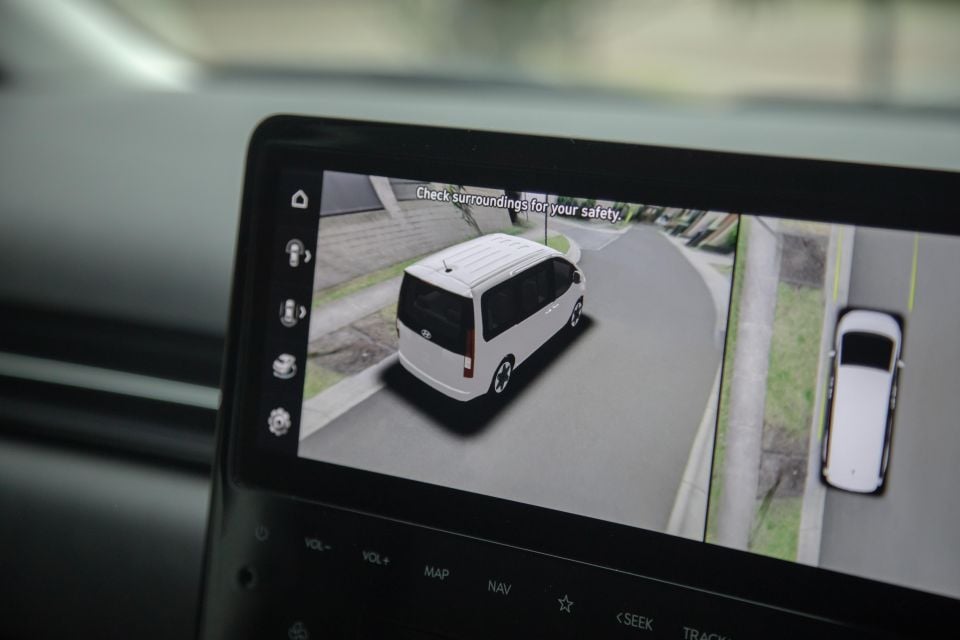
At the time of writing, the Staria (and Staria-Load) models have not been tested by ANCAP or Euro NCAP.
Safety equipment includes autonomous emergency braking (AEB) with pedestrian/cyclist detection and junction (turning) assist, blind-spot collision avoidance (but not the Blind Spot View Monitor cameras used on Highlander), lane-keeping and lane centring assists, multi-collision braking, rear cross-traffic alert and driver attention warning.
The Elite adds safe exit warning and surround-view cameras above the base version.
The Staria fits seven airbags as well as ISOFIX and tether anchors points in row two base seats, though there is no child seat support in the third row.
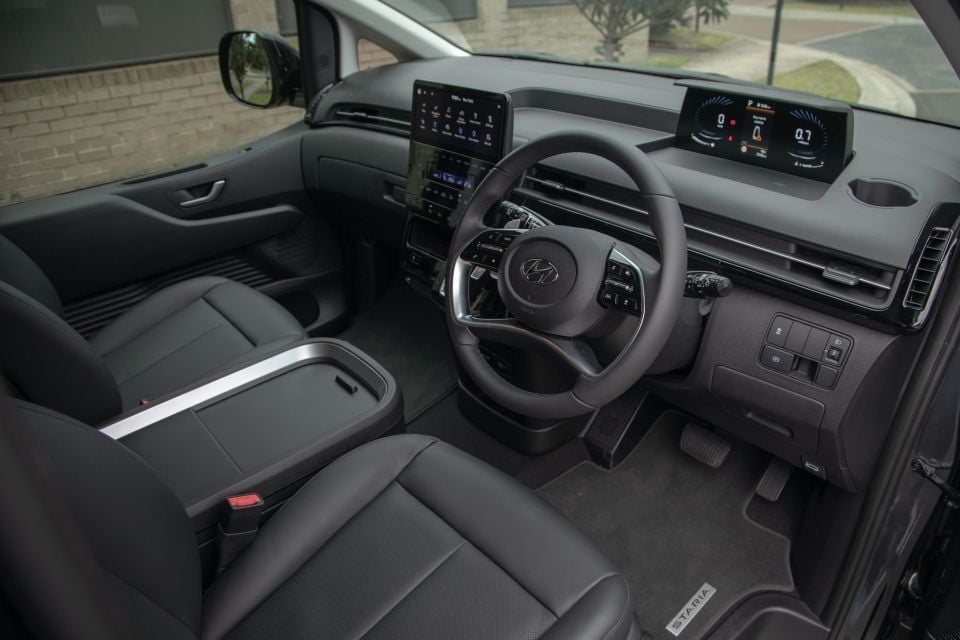
Despite its exterior funkiness, there’s no mistaking Staria as a van climbing in, from the instant you open its huge and hefty doors. But if you’re far more familiar with SUVs don’t let the van-isms unduly deter you, because there’s a lot to like about its packaging, convenience and vibe.
It’s feels very airy and nothing like an SUV. Part of that is the more ‘open’ first row configuration, with its huge console bin and nearly flat floor. Some of it is the simplistic and clean dash fascia with its impossibly deep top. But what really anchors the cavernous sensation is the vast glass area, which brings remarkable visibility and a huge amount of sunlight.
That the massive front windows don’t fully stow beyond their sills, which essential make for outer arm resters, will only annoy some owners…

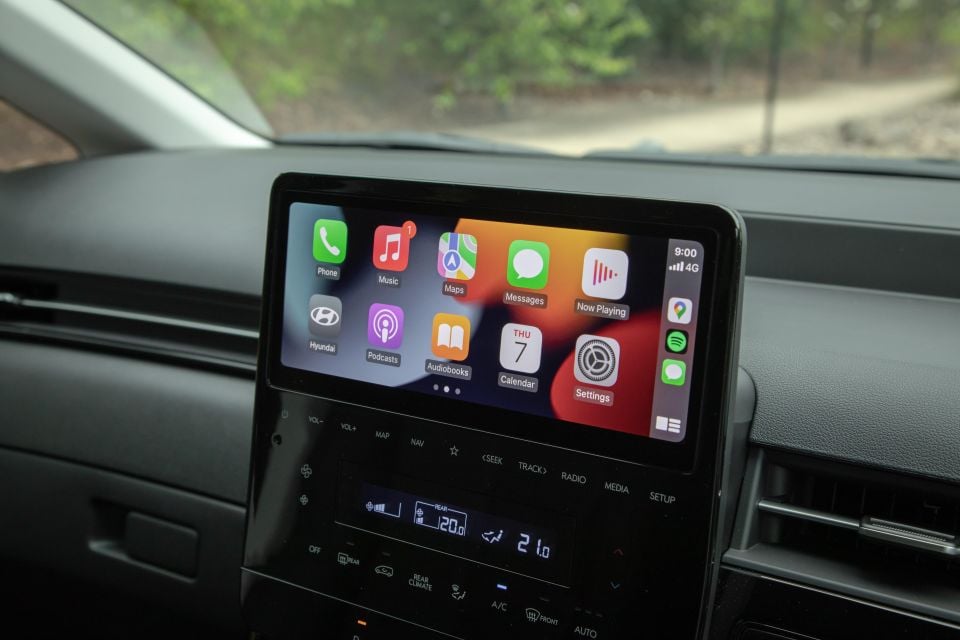
There’s acres of plain plastic, but the Staria plies plenty of piano black and enough richness in dash features and controls – particularly the lovely paddle-shifter wheel and by-wire transmission button control array – to bring a nice modern sense and ample classiness. In fact, apart from the lower-spec digital cluster through to less conspicuous details, very little separates the Elite from the ten-grand-pricier Highlander.
The LCD driver’s screen is more stylised than anything, with the world’s strangest tachometer. But it works fine enough. The infotainment system is your familiar high-grade Korean marque fare, which is better than a good many rival mainstream systems out there, and it’s reasonably fast and quite colourful.
No wireless phone mirroring, though, but the rubberised inductive phone charging slot is quite handy for also stashing the key and glasses. The climate control has a handy dedicated rear control above the second-row seating and overhead ventilation and, besides somewhat noisy operation, it does a fine job of regulating cabin temperature.
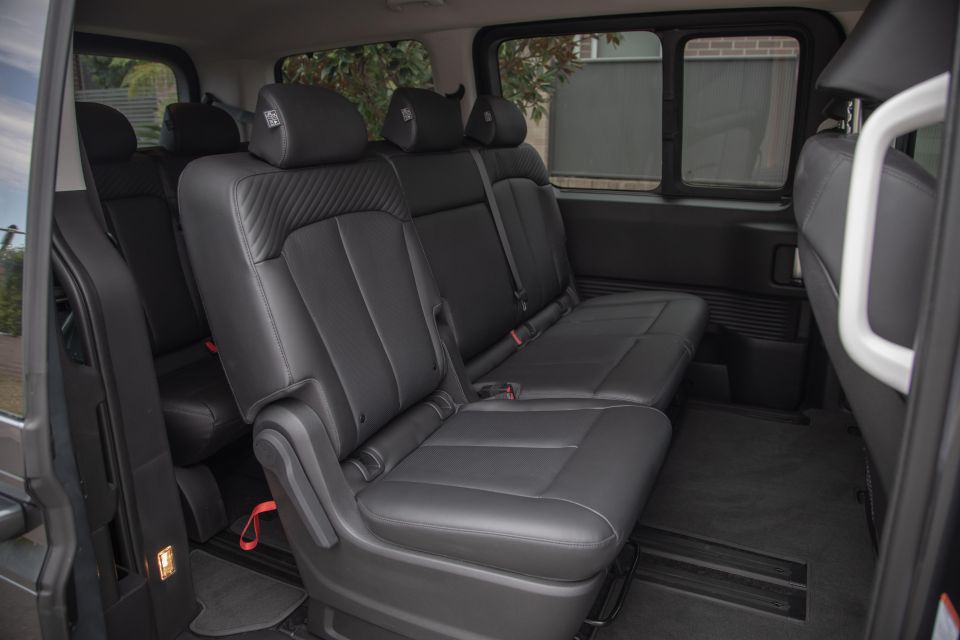
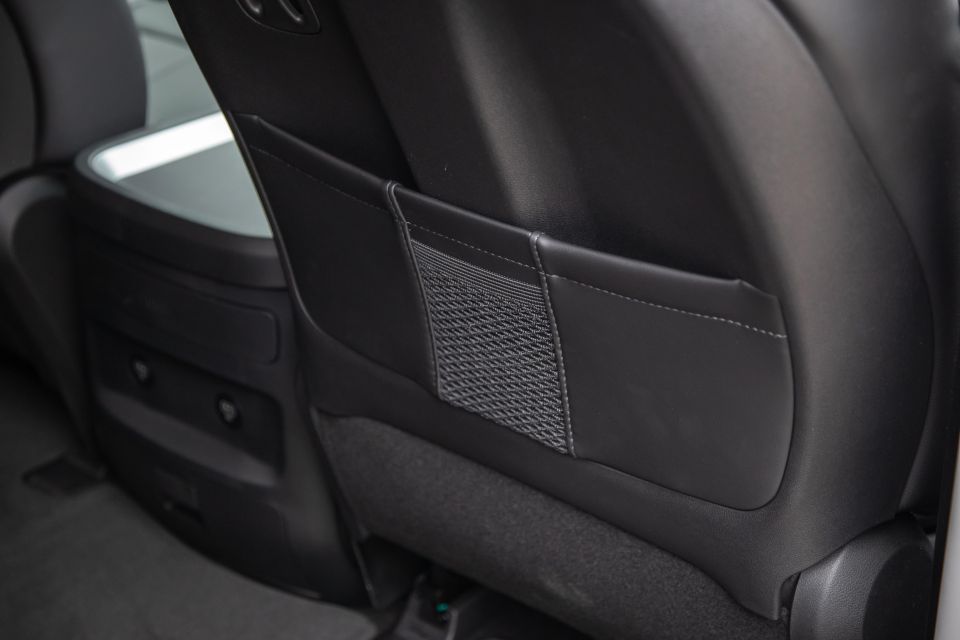
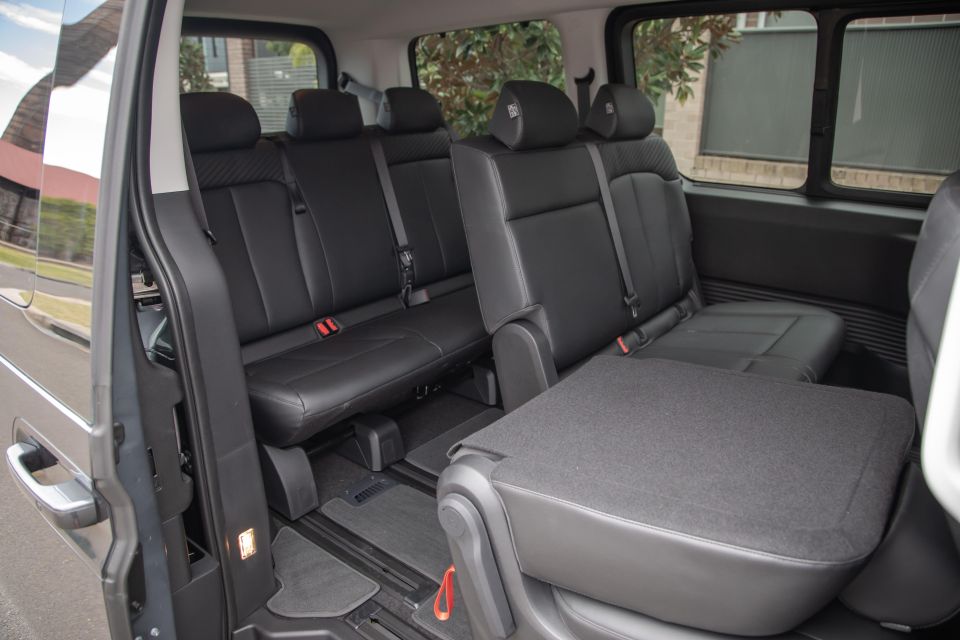
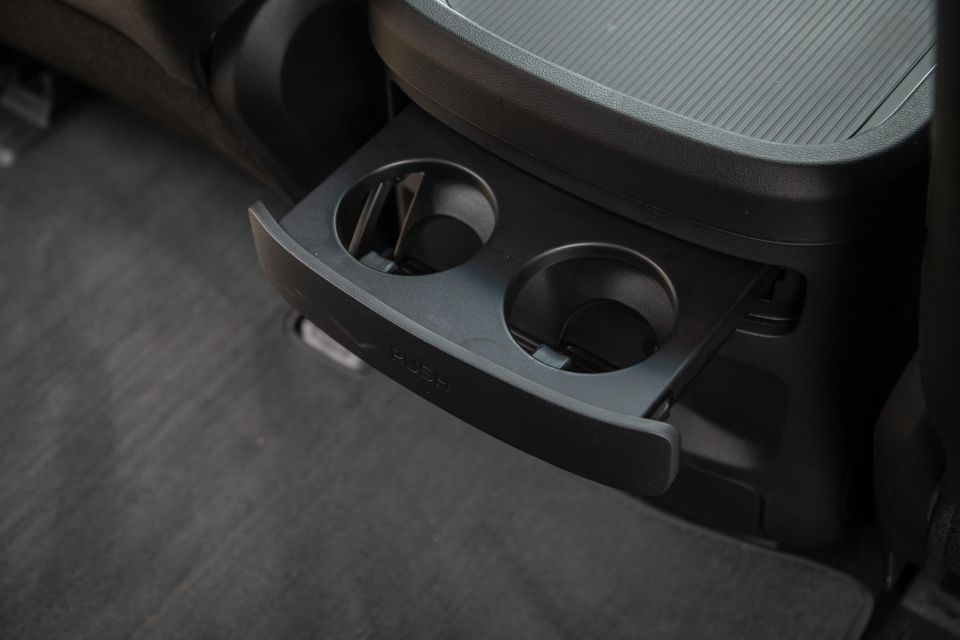
There are oodles of storage options, including a deep console bin with dual cupholders to compliment the pop-out passenger unit and driver’s side dash-top bottle-holder. In fact, there are 16 cupholders in total!
Also, the dual USB ports in all three rows are thoughtful inclusions. There are stacks – literally – of storage areas in the doors, formed in hard plastic so your personal effects can tend to rattle around a bit.
Between the sheer length of Staria and the sliding and tilting second and third rows of seating, you can dial in and balance out space and comfort depending on the number of occupants and your luggage stowing needs.
Generally though, the rows get progressively less comfortable from the first through to the rearmost, which includes the quality of the seating as well.
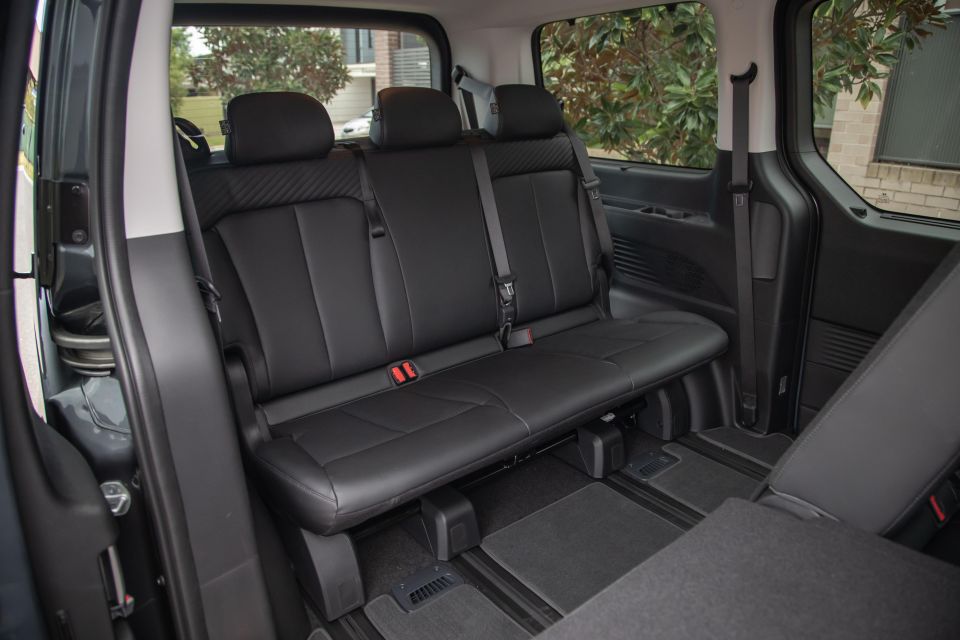
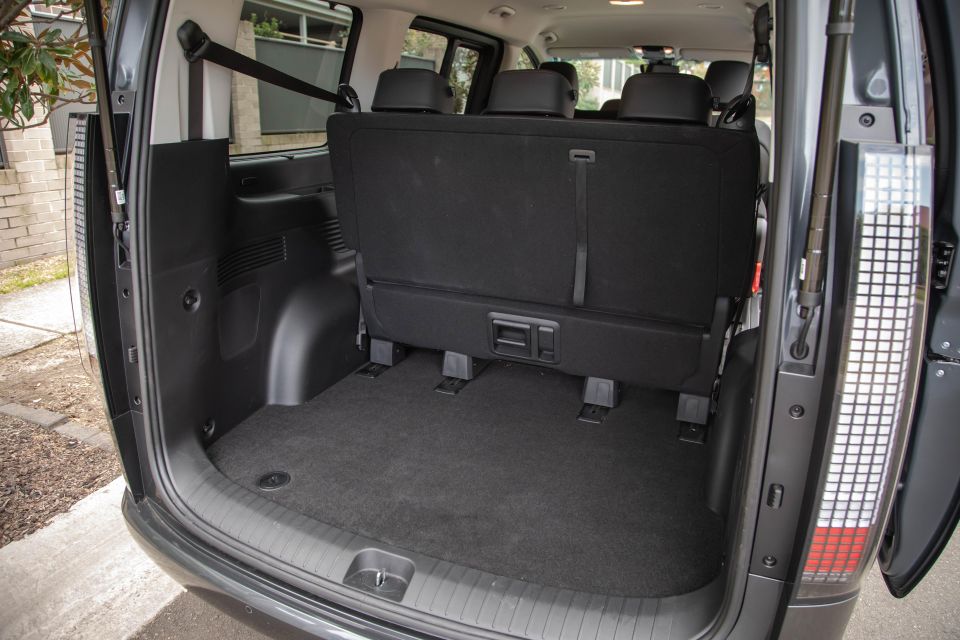
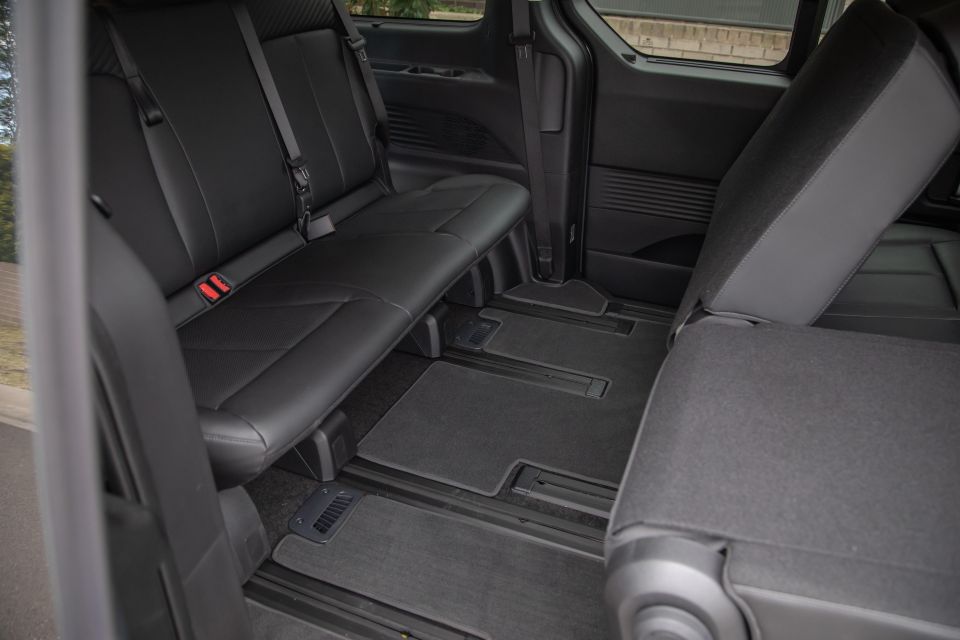
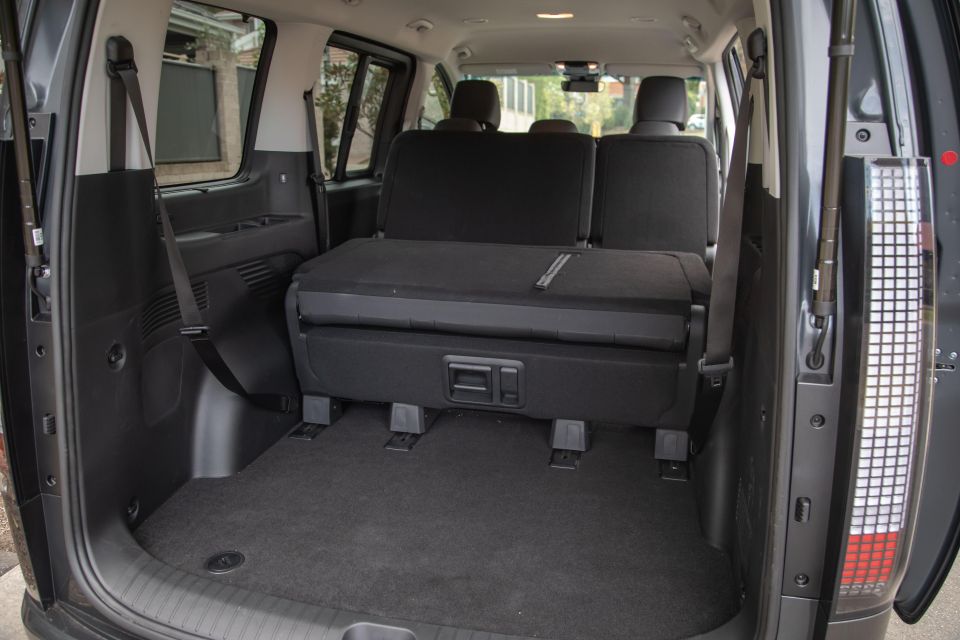
Row two is fine, the 60:40 split bench bringing a huge measure of fore-aft adjustment, and anyone from sumo wrestlers to NBA players can carve out proper business class accommodation. Row three, though, nestles seating between rear wheel wells and best treated as a two-adult prospect.
The powered sliding door are convenient, the multi-action folding rigmarole to move row two to access row three less so. In fact, at first the seemingly random array of levers and tabs for various seat folding and tilting – some in front of the seat, some behind – makes adjusting the pews a little puzzling, but you can learn its whims fairly quickly.
As we’ve noted in the past, it’s not as versatile as Carnival and nor are the seats removable to create a surrogate Staria Load for enthusiastic jaunts to Ikea. The third row folds but doesn’t really stow, per se.
That said, its 831 litres of cargo space is very usable, converting into a sort of ad-hoc twin-level 1303-litre arrangement with the rearmost seatbacks folded flat.
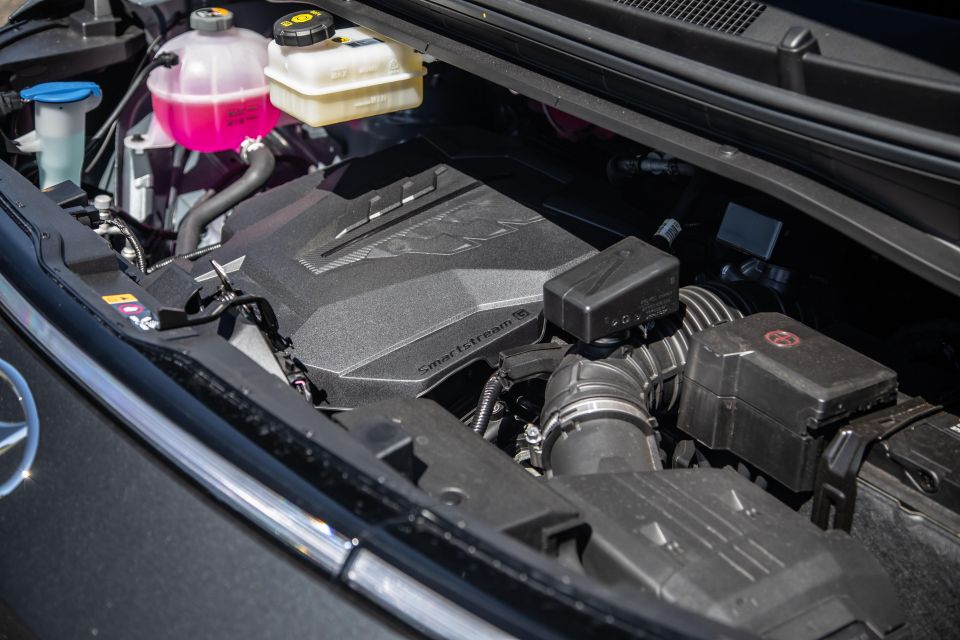
The lower-spec powertrain fitted here is a naturally-aspirated 3.5-litre petrol V6 backed by an eight-speed automatic driving the front wheels.
It’s good for a fairly healthy 200kW and 331Nm, a more suitably fit unit for lugging around a load full of loved ones and it’s prudent that Hyundai didn’t merely stump for a make-do, smaller-capacity four.
It’s quite a bit up on power against the high-grade 2.2-litre diesel alternative’s 130kW, if fairly short on torque compared with the oiler’s lustier 430Nm. In Staria form the diesel is married to on-demand all-wheel drive, or front-drive in the diesel-only Staria Load commercial.
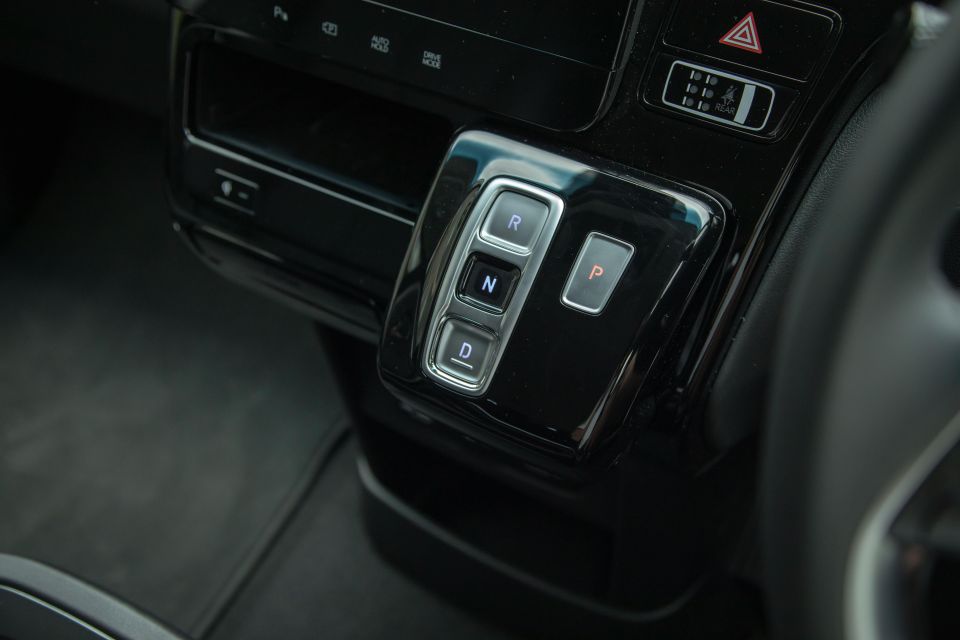
Unsurprisingly, the petrol option is quite a bit thirstier in claim – 10.5L/100km against the diesel’s 8.2L/100km – and given the torque deficit it’s fair to presume that level of frugality will diminish more greatly laden to the hilt with occupants and day trip addenda.
During ‘socially distanced times’ it’s a little tough to assess the consumptions extremes, but a bit of mixed driving returned fuel figures in the 11s and 12s.
There’s no towing capacity penalty in opting for petrol as either Staria format will tow 2500kg braked or 750kg unbraked. The V6 clocks in at a portly 2147kg and its GVM is 2920kg. While on stats, its payload capacity is 773kg.
Worth a shout out is that the Staria sits on strut front and multilink rear suspension, whereas the Staria Load commercial van adopts a left-sprung torsion beam rear more suitable for its circa one-tonne payload capacity.

It’s a big unit and feels as much on the road. That said, it’s surprisingly easy to punt and to judge, seeming to shrink around you on the move.
The sensation is helped greatly by the huge side glass and, thick A-pillars apart, generally fine outward visibility. That said, the long nose does disappear beyond the lower edge of the windscreen. Thankfully, the forward camera display, which automatically activates off the mark, is wonderfully large and crisp – in fact, the whole 360-degree camera system, including the novel ‘floating camera VR mode’, is as impressive as it is convenient and helpful.
The only really dicey moments in this 2.0-metre tall prospect are in multi-story carparks, quite often with a mere 2.1 metres of ceiling clearance (though my local shopping centre is 2.05m). First attempt, our Staria’s aerial clipped a lot of plumbing, but the concern is the tailgate spoiler, which juts proudly aloft once the liftback is fully opened. Better pack some touch-up paint.
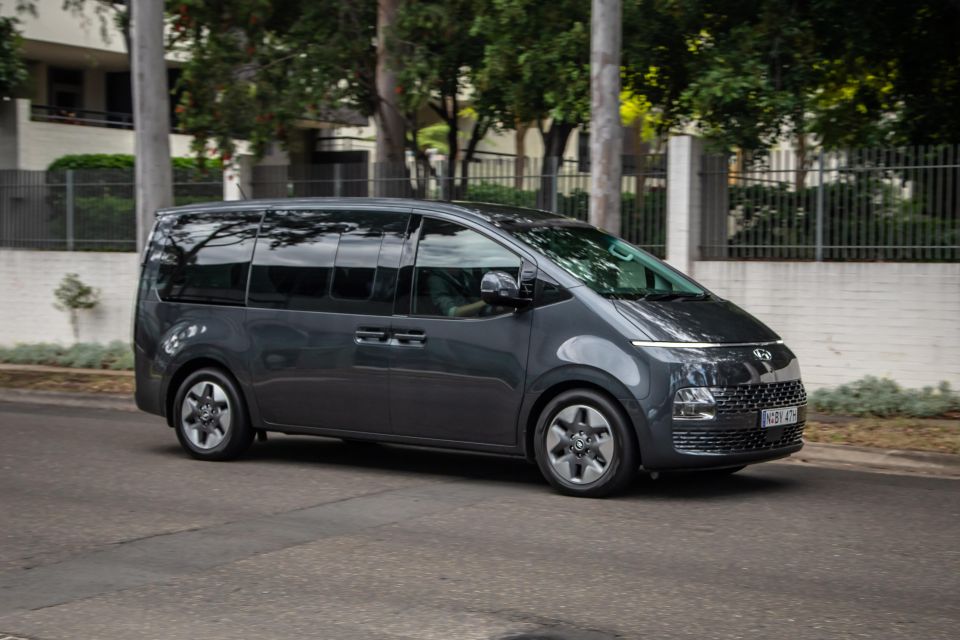
Understandably, a certain amount of van DNA is inescapable, such as the tendency for ambient noise is what’s ostensibly a large, open metal box, three rows of seating or not. But I changed into my Staria foray directly off the back of a stint in the tradie-spec Staria Load and the people-moving version is measurably more comfortable, seemingly more refined and generally more passenger-car-like.
How so? Much of it is the suspension tune, which is clearly softer in eight-seat guise and heavier, which makes it feel more settled and more complaint over road lumps and bumps. Even one-up and as unladen as it’ll get, there’s no jiggling to the primary ride while the compression and rebound in the damping is ideally tuned.
As we’ve noted prior, there’s none of Hyundai Australia’s usual deft fettling of the suspension for localised ride and handling, and the front-driven Staria doesn’t suffer at all for the lack of the local touch. Despite the comfort leaning of the suspension tune, the van sits rock solid on the move, with nothing wallowy or spooky about its nature.
It steers and tracks confidently, and is quite the cooperative and unflustered thing to spend long town stints or in tackling long road trips in. Hyundai’s move to a front-driven platform for its van breed doesn’t seem to cause any detriment to drivability, though all of our assessment was made in dry running so the jury is out on traction and grip when it comes to negotiating slippery conditions.
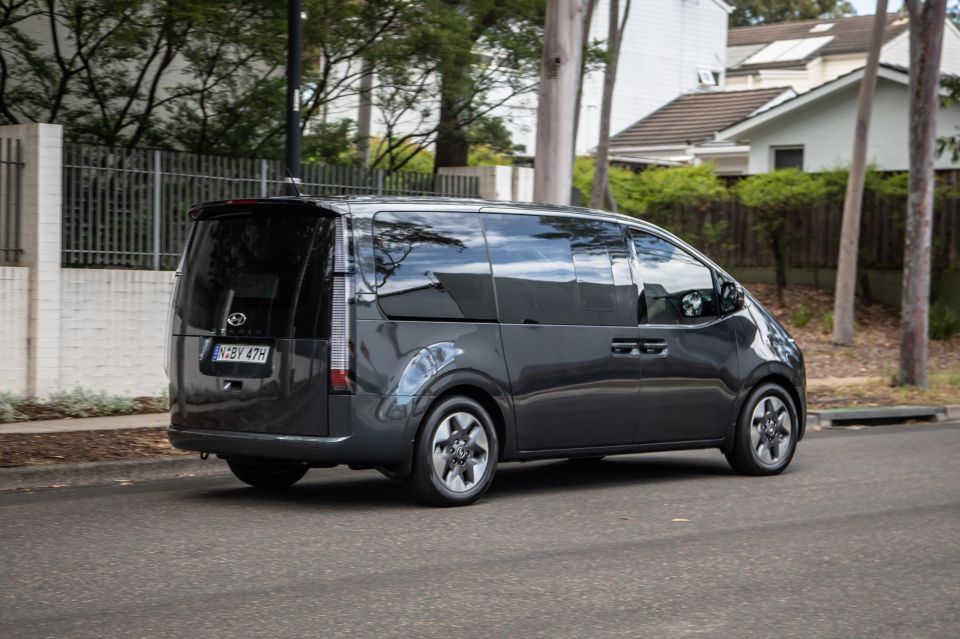
Part of its pleasant, passenger-car nature is also down to the powertrain. Sure, it might lack a bit of the diesel’s low-stress shove and when faced with a workout – powering uphill, for example – it can get a little red-faced. But the flipside is that there’s none of the diesel’s evident chatter and the petrol powertrain remains generally clean in behaviour at low speeds and when treated with moderation.
That said, the auto can become a little slurry, particularly in early warm-up, and at times its general smoothness turns flustered. In character, the powertrain is more polite than lusty and focused. But, treated leisurely there’s quite a luxurious sheen to its manner around town. Despite a few odd, faint rattles typical of the van format, it’s impressively quiet.
If there’s one gripe, it’s that the lane-based assistance system is a little heavy handed and I found myself switching it off at the outset of every trip. The audible warning system gets tiresome, too, though it can be defeated, unlike the blind-spot warning system that tends to trigger often at Sydney intersections, caused by the city’s myriad dual turning lanes.
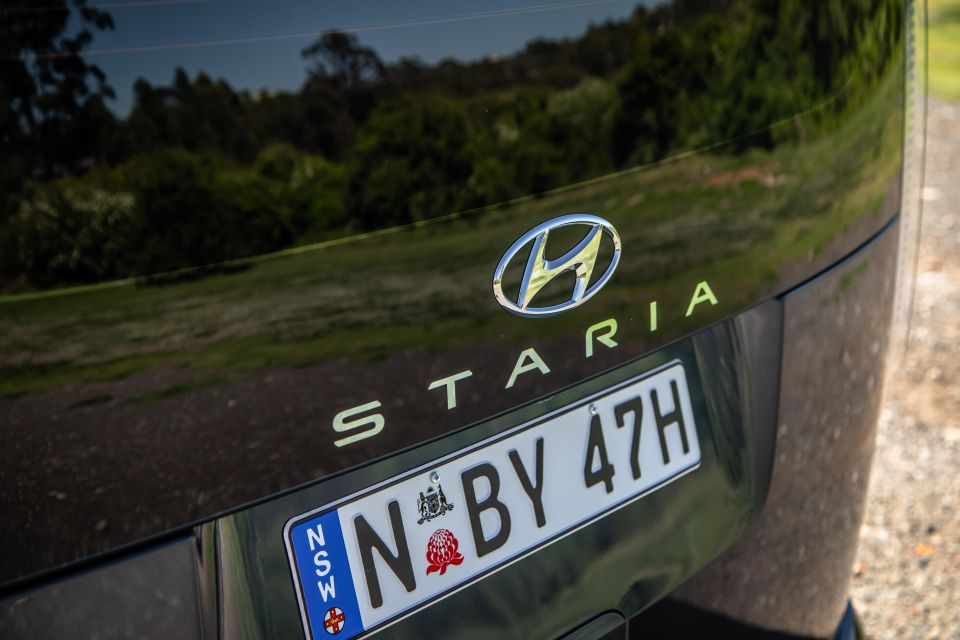
Where expert car reviews meet expert car buying – CarExpert gives you trusted advice, personalised service and real savings on your next new car.
The Staria comes with a five-year, unlimited-kilometre warranty like the wider Hyundai line-up.
Service intervals are a typical 12 months or 15,000kms – whichever comes first.
Hyundai offer three upfront payment packages for servicing: $1080 for three years/45,000km, $1440 for four years/60,000kms, or $1800 for five years/75,000kms.
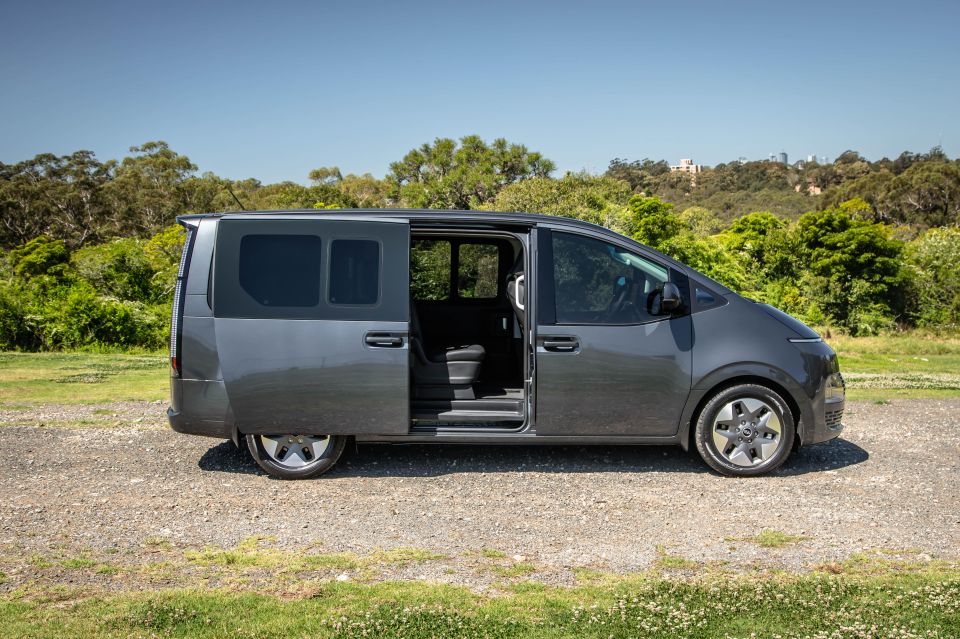
The Staria is a fetching and distinctive people mover on bold-faced appeal and a quality rig in the petrol-powered Elite experience.
Its biggest strengths are roominess, comfort and refinement. It’s a welcoming thing to drive and to spend decent time in. That it doesn’t look nor necessarily feel much cheaper than the measurably more expensive Highlander strongly suggests that it could be sweet spot in the range and there are a lot better ways to splurge the $10k saved by avoiding the flagship.
Equally, all of the goodness Elite trim adds probably does make the walk-up from base level worthwhile.
Petrol power? It’ll cost more to run, particularly clocking up the tyranny of Aussie distance, but the smooth and dignified running it returns will be a fair trade-off in many buyers’ eyes.
It’s debatable whether its cousin, the more flexible and perhaps more practical Kia Carnival, would be the preferred option. But that doesn’t take into account the deep cut of the Hyundai’s stylistic jib, which many tyre-kickers will inevitably prefer. And there’s nothing wrong with that at all.
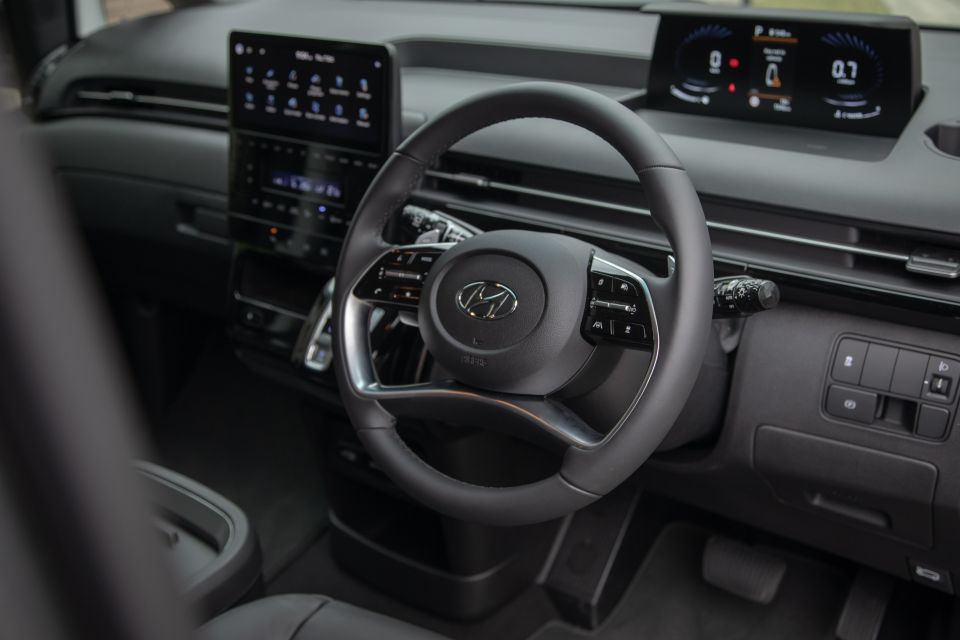
Click the images for the full gallery
Where expert car reviews meet expert car buying – CarExpert gives you trusted advice, personalised service and real savings on your next new car.


Max Davies
1 Day Ago


William Stopford
2 Days Ago


Damion Smy
4 Days Ago


Damion Smy
5 Days Ago
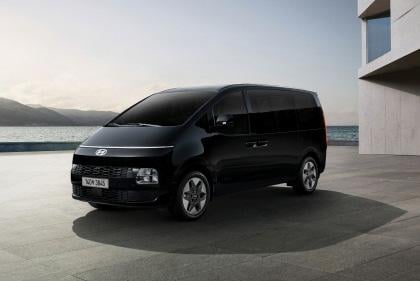

Damion Smy
10 Days Ago
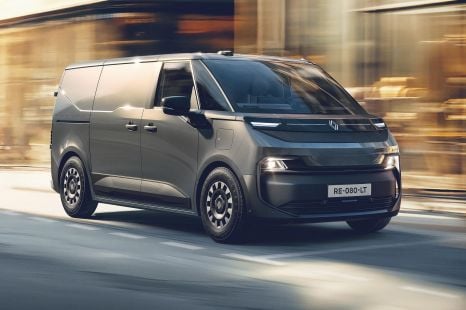

Derek Fung
1 Month Ago